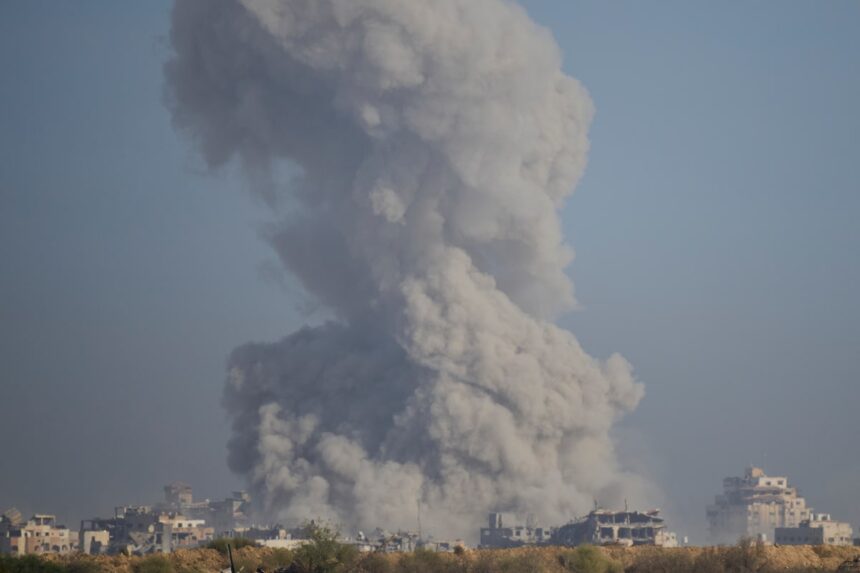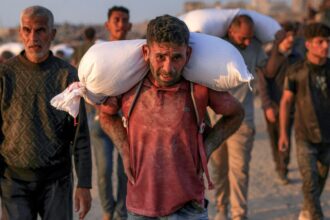In a devastating escalation of violence, Israeli airstrikes across the Gaza Strip have claimed the lives of at least 42 Palestinians, including children and women, according to local health officials. The bombardment, which intensified overnight, targeted multiple residential areas in what Israeli military officials described as operations against Hamas infrastructure.
The strikes hit densely populated neighborhoods in Gaza City, Rafah, and central Gaza, where thousands of displaced families have sought refuge after multiple evacuations. Rescue teams worked frantically through the night, pulling bodies from collapsed buildings as medical facilities, already stretched beyond capacity, struggled to treat the wounded.
“We are seeing casualties arrive with severe injuries consistent with explosive trauma,” said Dr. Mohammed Al-Rayes, chief physician at Al-Shifa Hospital. “Many require immediate surgeries we cannot perform due to critical shortages of medical supplies, anesthetics, and blood products.”
The Israeli Defense Forces (IDF) stated the operations specifically targeted Hamas command centers and weapons storage facilities allegedly embedded within civilian infrastructure. “Our intelligence confirmed these locations were being used to plan and execute attacks against Israeli civilians,” said IDF spokesperson Lieutenant Colonel Avichay Adraee in a statement released early this morning.
Palestinian officials strongly disputed this characterization, claiming the strikes primarily hit residential buildings with no military presence. The Gaza Health Ministry reported that among the deceased were 16 children and 11 women, with over 150 people sustaining injuries of varying severity.
The CO24 World News team obtained footage showing rescue workers digging through concrete rubble with bare hands as ambulances rushed the injured to hospitals. Eyewitness accounts described scenes of chaos as families fled their homes amid the bombardment, many carrying only what they could gather in moments.
International humanitarian organizations have expressed alarm at the mounting civilian casualties. The United Nations Office for the Coordination of Humanitarian Affairs (OCHA) warned that Gaza’s healthcare system is “on the verge of complete collapse” after months of sustained conflict and restricted aid deliveries.
“This latest escalation comes at a time when the humanitarian situation in Gaza has reached catastrophic proportions,” said UN spokesperson Stéphane Dujarric. “Hospitals are operating without electricity, clean water, or essential medicines. Each new casualty further strains a system already unable to provide basic care.”
The violence represents the deadliest 24-hour period in Gaza in recent weeks, occurring against the backdrop of stalled ceasefire negotiations. Diplomatic sources involved in mediation efforts told CO24 Politics that the talks have reached an impasse over key conditions from both sides.
Regional economic analysts speaking to CO24 Business noted that the prolonged conflict continues to devastate Gaza’s economy, with damages to infrastructure estimated in the billions and unemployment reaching nearly 80 percent among the working-age population.
As families mourn their losses and tend to the wounded, the international community faces difficult questions about its role in ending the bloodshed. With diplomatic efforts yielding little progress and humanitarian conditions deteriorating daily, how many more civilians must perish before effective intervention creates a path toward sustainable peace?










